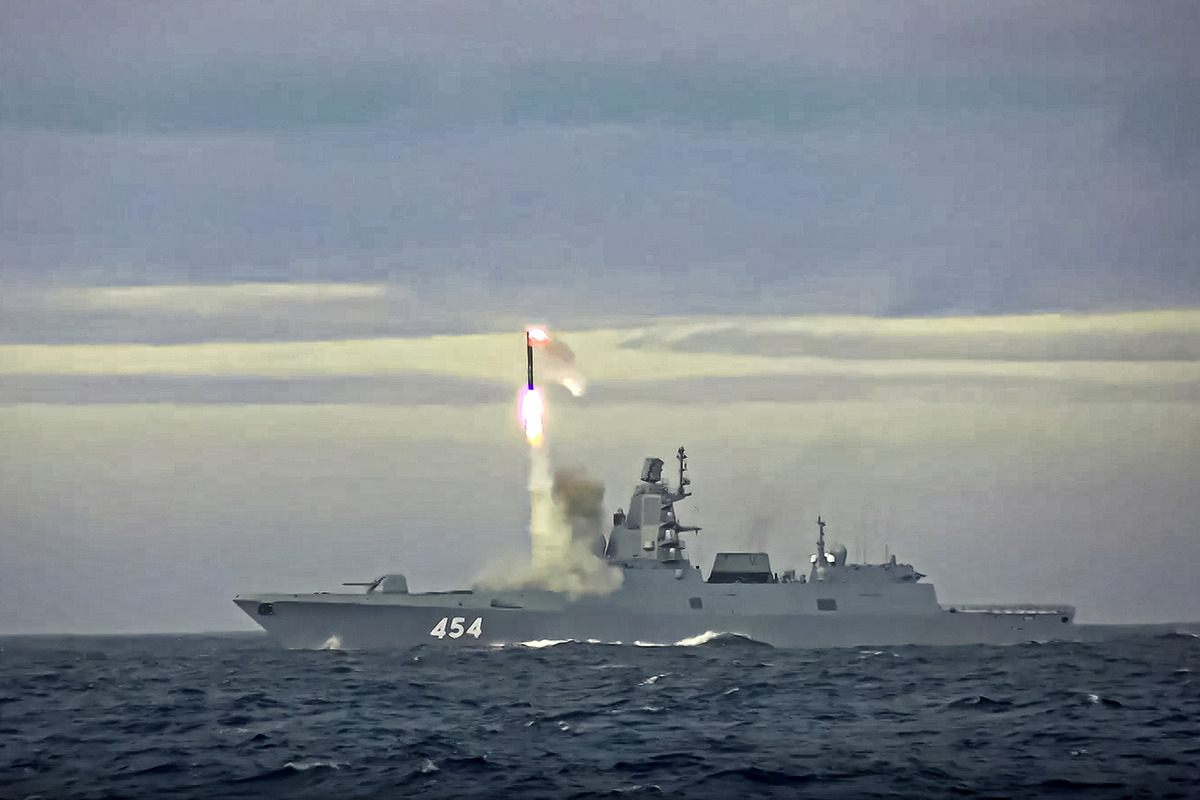Is Russia Testing Hypersonic Missiles Near NATO's Arctic Border?

Published: 2025-09-14 16:11:19 | Category: World-Economy
Russia's recent test-firing of the advanced Zircon hypersonic missile in the Barents Sea highlights the country's ongoing military capabilities and strategic ambitions amid rising tensions with NATO. This missile, reportedly able to reach speeds of Mach 9, represents a significant advancement in missile technology, raising concerns over regional security and military readiness.
Last updated: 16 September 2023 (BST)
Key Takeaways
- Russia conducted a test of the Zircon hypersonic missile during large-scale military drills, Zapad 2025.
- The missile is capable of speeds up to Mach 9 and ranges of 1,000 km (620 miles).
- This test occurred shortly after a significant drone incursion into NATO territory.
- The exercises involve both Russian and Belarusian forces and span multiple regions.
- Concerns are growing within NATO regarding Russia's expanding military presence in the Arctic.
Understanding the Zircon Hypersonic Missile
The Zircon missile, also known as Tsirkon or SS-N-33, is a cutting-edge weapon developed by Russia that is designed to travel at hypersonic speeds. Capable of reaching up to Mach 9, the missile can cover distances of approximately 1,000 kilometres (620 miles). Its speed and range make it a formidable asset in modern warfare, able to evade traditional missile defence systems.
Technical Specifications and Capabilities
Key features of the Zircon missile include:
- Speed: Up to Mach 9, allowing for rapid strikes against targets.
- Range: 1,000 km (620 miles), enabling it to target distant objectives.
- Launch Platforms: Can be deployed from ships and submarines, enhancing its tactical versatility.
Strategic Importance of Hypersonic Technology
The development of hypersonic missiles like the Zircon is significant for several reasons:
- Speed Advantage: The ability to strike quickly reduces the reaction time for adversaries, complicating defence strategies.
- Deterrence: Such weapons serve as a deterrent by showcasing advanced military capabilities, thus influencing geopolitical dynamics.
- Escalation Risks: The presence of hypersonic weapons increases the chance of miscalculations in tense situations, leading to unintended escalations.
Recent Military Exercises: Zapad 2025
The test-firing of the Zircon missile occurred during Russia's extensive military exercises known as Zapad 2025. These drills, which began on 15 September 2023, involve thousands of troops and various military assets operating across Russia and its ally, Belarus. The exercises are designed to simulate a range of operational scenarios and enhance military readiness in the face of perceived threats.
Geographical Context of the Exercises
The Zapad 2025 drills are taking place in crucial regions including the Baltic and Barents Seas, areas that have strategic significance for both Russia and NATO. The Barents Sea, in particular, is home to Russia's Northern Fleet and its nuclear submarines, posing a direct challenge to NATO's presence in the adjacent Baltic region, often referred to as a "NATO lake" due to its proximity to member states.
Implications for NATO and Regional Security
The ongoing military activities raise alarms within NATO, especially following incidents such as the recent overflight of nearly 20 Russian drones into Polish airspace. Polish officials described this as a "test" of NATO's collective response capabilities, indicating heightened tensions in the region.
International Reactions and Concerns
Russian President Vladimir Putin has touted the Zircon missile as "unmatched globally," which reflects the Kremlin's focus on showcasing its military advancements. However, this has elicited apprehension from NATO members regarding Russia's intentions and its expanding military footprint in the Arctic.
Statements from NATO Officials
NATO officials and analysts have expressed concerns over the implications of Russia's military exercises. Iceland's Foreign Minister, Þorgerður Katrín Gunnarsdóttir, previously remarked that Russia's posture in the Arctic poses a "grave concern" for the alliance. This underscores the broader anxieties surrounding military developments in the region.
What Happens Next?
The joint military drills are scheduled to conclude on 16 September 2023, but the implications of these exercises will likely resonate well beyond their completion. Analysts are closely monitoring the situation to assess how these developments might affect NATO's strategic posture and potential responses to Russian aggression.
Conclusion
As Russia continues to demonstrate its military capabilities through advanced technologies like the Zircon hypersonic missile, NATO must navigate these developments carefully. The ongoing exercises and missile tests highlight the complexities of modern military strategy and international relations. How will NATO adapt its strategies in response to these evolving threats?
#Russia #HypersonicMissiles #NATO
FAQs
What is the Zircon hypersonic missile?
The Zircon missile is a Russian hypersonic weapon capable of reaching speeds up to Mach 9 and distances of 1,000 km (620 miles), designed for rapid strikes against targets.
What are the implications of the Zapad 2025 military exercises?
Zapad 2025 signifies Russia's enhanced military readiness and showcases its capabilities, raising concerns within NATO regarding security and regional stability.
Why is NATO concerned about Russia's military developments?
NATO is concerned due to Russia's military activities near its borders, including hypersonic missile tests and military exercises, which could challenge the alliance's defensive posture.
How does hypersonic technology affect modern warfare?
Hypersonic technology changes modern warfare by allowing rapid strikes, complicating defence strategies, and increasing the risks of miscalculation in tense situations.
What are the potential risks of hypersonic missiles?
Potential risks include reduced reaction times for defence systems, increased escalation chances during conflicts, and the potential for miscommunication between nations.



